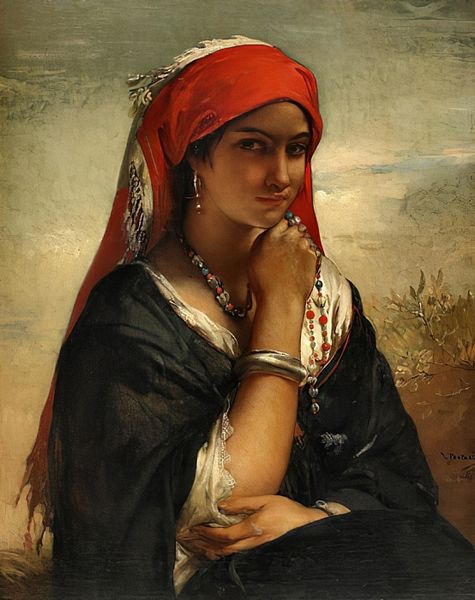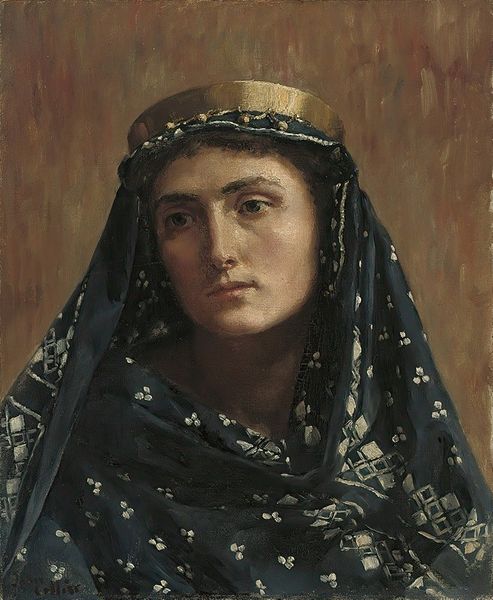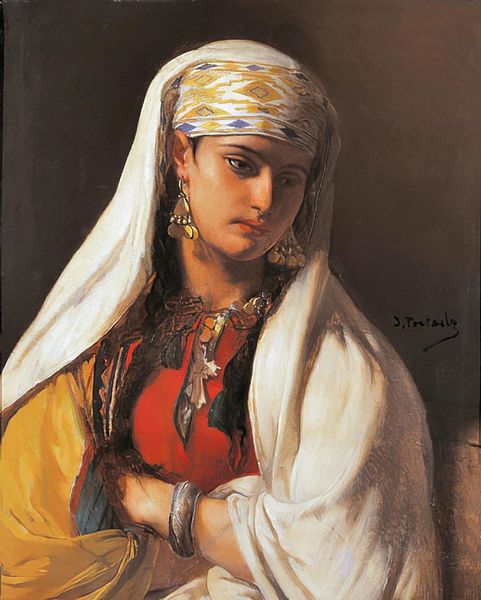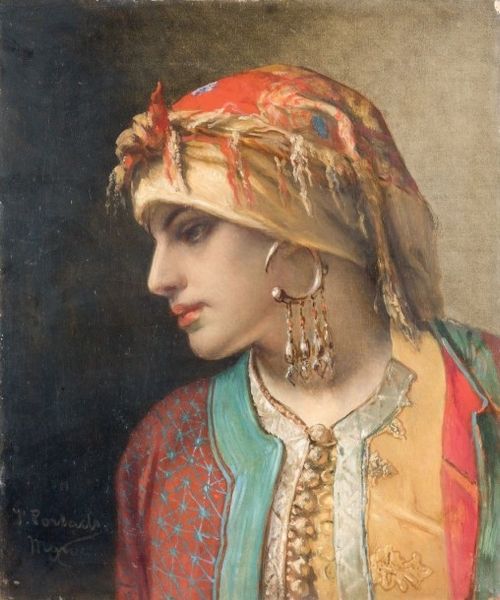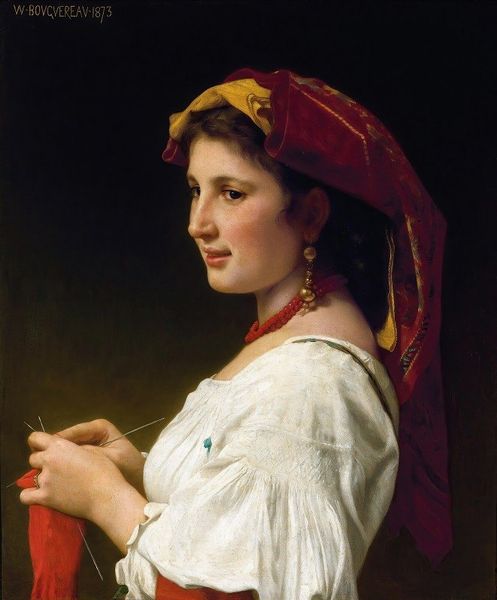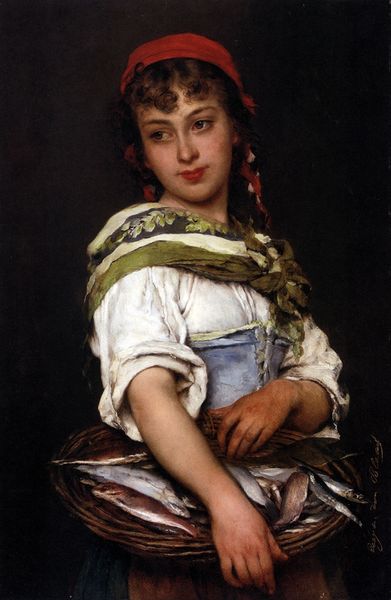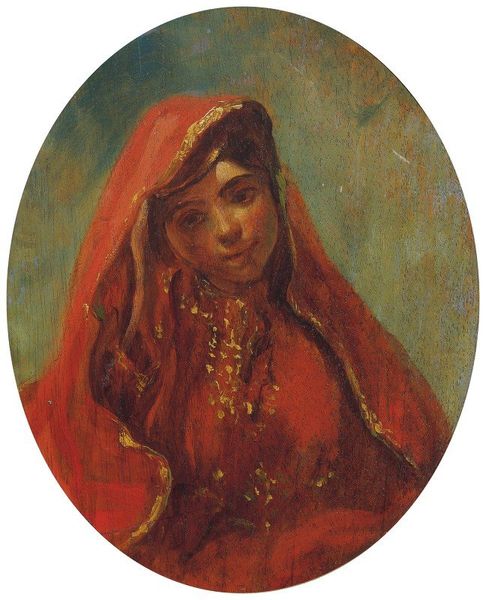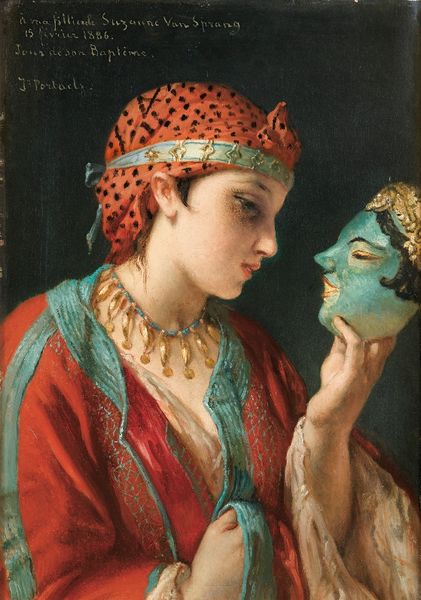
painting, oil-paint
#
portrait
#
portrait
#
painting
#
oil-paint
#
figuration
#
romanticism
#
history-painting
Copyright: Public domain
Editor: This is Jean Lecomte du Nouÿ's "Judith," painted in 1875. It's oil on canvas, depicting Judith in profile. The detailing in her garments is really striking; they appear weighty and ornate. What draws your attention in this piece? Curator: I'm immediately struck by the opulent display. Look closely – not just at the fabrics and jewelry, but at the paint itself. The artist is meticulously rendering texture and shine, almost flaunting the labour involved. Think about the late 19th century, a period of industrialization; this painstaking realism, highlighting handcrafted elements, could be seen as a reaction to mass production. How does the choice of depicting a historical subject reinforce this idea for you? Editor: I see your point. The historical setting allows for a focus on artisanal goods – jewelry, embroidered textiles – things created before the rise of factories. Almost a romanticisation of the past through its materials? Curator: Exactly! And consider Judith herself. Her story, a tale of female agency and violence, is presented through this lens of luxurious fabrication. Are we meant to admire her strength, or the sheer artistry that has gone into representing her? Where does our gaze truly rest? Editor: It makes you wonder about the artist's intent – were they more interested in historical accuracy, the drama of the story, or purely in showcasing their technical skill through the meticulous rendering of textures and materials? Perhaps it’s about all three aspects equally. Curator: Precisely. By focusing on the material construction and historical context, we shift away from a purely narrative reading and start questioning the very act of creation, its values, and the labour that informs it. This exploration has deepened my understanding of how societal shifts can really shape artistic priorities. Editor: Definitely! I’m now seeing the painting as not just a representation of Judith, but also a commentary on the value of craft in an industrialising world.
Comments
No comments
Be the first to comment and join the conversation on the ultimate creative platform.
